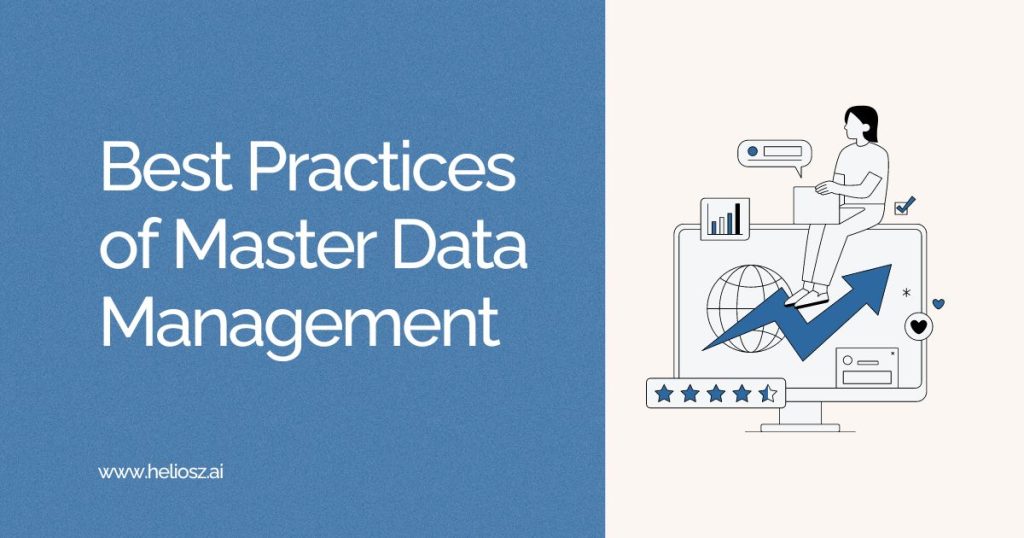
Businesses today rely on data to make wise decisions and stay ahead of the game. Unfortunately, tons of data come from different sources and platforms. But ways of managing, analyzing, and interpreting them are daunting. It is siloed, fragmented, and untapped by the time data flows from diverse sources—CRMs, social media platforms, IoT devices, etc. Data integration is very important here as it combines data from various sources into a single location, allowing businesses to create a clear and complete picture of operations.
This article discusses the importance of data integration in business intelligence- its important role in BI, its approaches, best practices, etc – and how businesses can use data integration to achieve a competitive advantage.
What is Data Integration in Business Intelligence?
Data integration in business intelligence refers to the combination of different data, which is usually generated from different sources to achieve an integrated view for analysis and utilization in decision-making. Typically, most companies would source data from different places; this includes customer databases, sales systems, marketing tools, and even social media websites. More often than not, this data is scattered throughout several systems, hence challenging perceptions of a clearer view. Data integration combines data from various sources into a unified view, either through centralization (e.g., data warehouses) or real-time access via techniques like data virtualization. The unified data is analyzed with the business intelligence tool that detects some patterns, trends, or insights to help a business make better decisions, which would be impossible without data integration and fully benefit from the goldmine of information hidden in the data.
The Key Roles of Data Integration in Business Intelligence (BI)
Data integration performs several key functions in BI to make sure that information becomes accessible and is to be relied upon, ready to be used through analysis. Below are the most important roles of data integration in BI:
1. Integration of Data from Multiple Sources
Data integration in Business Intelligence essentially helps aggregate data coming from various, sometimes siloed, sources. Data is primarily gathered through various platforms like CRM systems, financial software, marketing tools, as well as data suppliers from external regions. Such a system of different systems would store data in its format, which makes it difficult to make the data useful for analysis. Data integration brings all this data together into a single, unified view regardless of their source. This centralization then allows the various business intelligence tools to access and analyze data sources simultaneously for an integrated view of the business. Data integration prevents each department from functioning on its fragmented view of the data, which results in misaligned decisions and inefficiency.
2. Better Quality and Consistency of Data
For reliable BI insights, the data to be analyzed must be consistent, accurate, and of good quality. The role of data integration is the cleaning and standardizing of data coming from several sources. Transformations often take place while integrating data into common structures and formats for achieving consistency. This role is quite important in eliminating errors such as duplicates, inconsistency, and incomplete data. Integration transforms raw data into a standardized format to make it possible for business intelligence tools to work with correct and uniform data, thereby enhancing the reliability of the insights and forecasts generated.
3. Enablement of Timely and Real-Time Decision-Making
The modern dynamic business world requires the right decision at the right time. With many businesses facing fast-changing market conditions, customer behavior, and other extrinsic drivers, there is a need for quick response mechanisms. Data integration in real-time or near-real-time makes an important contribution to the information that business intelligence systems access. Flowing continually, near-real-time data integration enables business intelligence systems to respond promptly when events occur by giving instant insights. For example, in retailing, an integrated dataset can be used to track on-hand inventory levels, monitor customer purchases, and adjust marketing strategies in real time. No delay occurs here; decisions are always based on the latest available data, thus improving business agility.
4. Providing Advanced Analytics and Predictive Insights
Data integration is required to facilitate advanced analytics, including predictive modeling, machine learning, and data mining, within BI systems. These advanced techniques rely on large datasets from many different sources, allowing users to spot trends and patterns otherwise unnoticeable in the smaller, isolated datasets. This process embeds data from various departments, systems, and external sources to implement these advanced analytical techniques to generate more detailed and actionable information. For example, with integrated data, a company can be analyzed to find insight into future buying behavior and enable them to strategize the marketing and sales plan in advance. More importantly, integrated data drives predictive analytics that enables an organization to better understand the potential risks and opportunities; it can make decisions proactively, thereby avoiding chances of loss and boosting returns for investments.
5. Facilitating Collaboration in Different Departments
Data integration allows for collaboration within an organization among different departments. Without data integration, departments may be working separately in separate datasets, complicating the aim of aligning their efforts and strategy. For example, sales and marketing will have overlapping customer data but work independently, leading to inconsistency in the customers’ targeted and useless marketing campaigns. With data integration, all departments can access a unified dataset, ensuring a consistent view of business operations. It supports cross-departmental collaboration; everyone’s work is anchored in the same dataset, and it keeps the teams aligned. For example, marketing can utilize sales data to understand customer preferences better, and finance can utilize the data obtained from sales for revenue forecasting. This kind of work helps in efforts that are way more coordinated, leading to better business results.
6. Improves Data Governance and Compliance
Data integration is of major significance in regulated industries: health care, finance, or energy because one wants to make sure data still complies with standards of the industry and governance standards. Furthermore, it helps ensure regulatory compliance—data protection laws and audit trails—reducing the risk of compliance violations. A data-integrated environment lets organizations establish control over more end-to-end governance policies that ensure monitoring and managing data without interruption across all systems. By having a single, integrated data source, it is easier to track how data is being used, where it’s being stored, and who has access to it, improving transparency and accountability. Furthermore, it helps ensure regulatory compliance—data protection laws and audit trails—reducing the risk of compliance violations.
7. Optimizing Data Storage and Retrieval
The ability of data for both storage and retrieval is vital to ensuring that BI tools perform optimally. Data integration helps streamline the organization and storage of large sets of data in data warehouses, cloud systems, or data lakes. This makes it easier for BI tools to quickly retrieve relevant data for analysis. For example, business organizations can speed up query performance and analytics by bringing in data from various sources to be saved in an organized data warehouse. In this way, reports, dashboards, and other BI outputs come in promptly.
8. Serving as a Basis for Business Intelligence Tools
The basic infrastructure of BI tools needs data integration to function properly. BI requires clean, consistent, and accessible data on which to draw, report, and visualize. The ineffective operation of BI tools is threatened by fragmented and siloed underlying data. The integration of data prevents businesses from having BI systems having appropriate data in the right form; this way, tools, such as dashboards, data visualization software, and reporting systems, can provide meaningful insights that are both accurate and helpful. From sales performance analysis to operational efficiency or understanding the behavior of customers, integration enables BI to present information in a form that is understandable and actionable to business leaders.
9. Customer Insight Development
A deep understanding of the customer is yielded from bringing together a single view of customer data and activity across different touchpoints, that is, website interaction, social media interaction, CRM systems, and purchase history. The 360-degree view of the customer allows for personalizing as well as targeting marketing, provides improved customer services, and most importantly, leads to customer satisfaction. An integrated customer database would make businesses know what their customers likely want and even customize the provision of product recommendations to their existing and potential clients. They start by designing focused marketing strategies that will capture the potential market. All information regarding their customers should be integrated and available so that there is a smooth and personalized experience leading to loyalty and retention.
Heliosz.AI, Trusted Data Solutions Partner for Better BI Outcomes
Heliosz.AI is a leader in data solution providers for integrating data from different sources. In Heliosz, the company focuses on delivering seamless data integration which helps organizations consolidate data from other systems, including consistency, availability, and accessibility of BI tools. Their expertise lets businesses unlock the full power of their data through accurate, real-time insights to support better decision-making. With Heliosz.AI, companies will find streamlined operations, upgraded data quality, and advanced analytics to establish strategies that are informed and actionable in driving a sustainable data-driven culture.
Conclusion
The core component of Business Intelligence is data integration, which enables businesses to turn raw data into meaningful insights. In a nutshell, it helps organizations centralize data, improve accuracy, and make decisions faster. With increasing volumes of data coming from various sources, if a business gets the right approach to data integration and follows the best practices, then it can ensure that it will make the most out of its BI systems. In doing so, they would improve operational efficiency, drive innovation, and gain a competitive advantage in the highly turbulent business environment.


